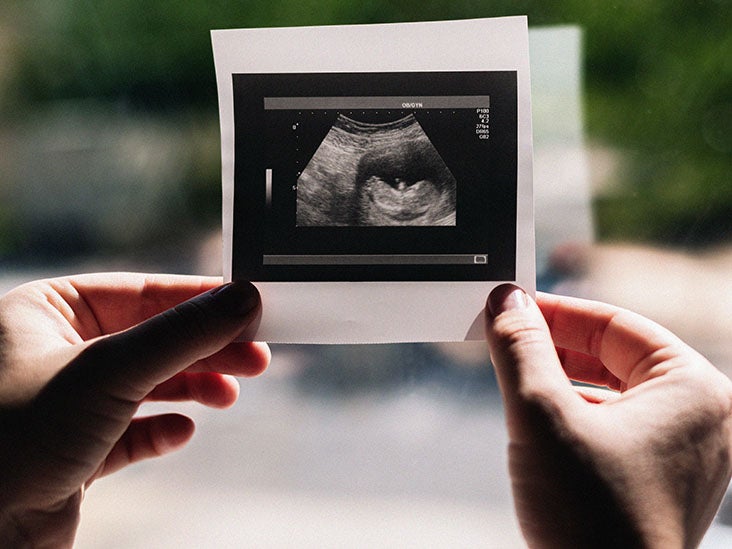Congenital disorders
AML during pregnancy: Risk factors and treatment
Acute myeloid leukemia (AML) is a rare type of cancer that starts in the bone marrow and typically progresses into the blood. Although this type of leukemia is more common in males and older adults, pregnant people can also develop it.
AML is rare and accounts for about 1% of all cancers. The average age of diagnosis is 68 years old, and it is unusual for a person to develop AML before the age of 45 years old. Because of this, pregnant people are not at high risk of developing this type of cancer.
Although unlikely, a pregnant person can develop AML. This type of cancer accounts for over two-thirds of leukemias during pregnancy.
This article examines how common AML is during pregnancy, the risk factors, and treatment during the first, second, and third trimesters. It also looks at whether treatment can harm a fetus, the safety of breastfeeding, and the outlook for the cancer.
AML during pregnancy is rare. It occurs in approximately 1 in 75,000–100,000 pregnant people.
Overall, doctors diagnose cancer in about 0.07–0.1% of pregnant people. Despite the low incidence, cancer is the second most common cause of death in pregnant people.
Read more about AML.
Anyone can develop AML, but certain risk factors may increase a person’s risk of developing the disease. For pregnant people, these risk factors include:
Read more about risk factors for AML.
Doctors may treat AML in a pregnant person differently from how they would typically treat the disease in someone who is not pregnant. This is because certain common AML treatments may harm a fetus.
Types of treatment for AML can vary depending on the extent of cancer, the pregnant person’s overall health, their personal preferences, and their pregnancy stage.
Read about the medications and treatments for AML.
Treatment during the first trimester
Treatment for AML during the first trimester of pregnancy is generally difficult.
Because AML progresses quickly, doctors advise that a person begins chemotherapy as soon as possible after diagnosis. However, receiving chemotherapy drugs during the first trimester can harm a fetus.
Chemotherapy during the first 3–10 weeks of gestation increases the risks of fetal death, pregnancy loss, and severe congenital anomalies in the fetus.
If a pregnant person delays chemotherapy treatment for AML, however, they typically face a reduced outlook and increased risk of death.
If a person develops AML during the first trimester, a doctor may discuss options to terminate the pregnancy. Delaying treatment could severely affect the health of the pregnant person and the fetus.
Read a guide to pregnancy trimesters.
Treatment during the second and third trimesters
Researchers have found that it is generally safe for a person to have chemotherapy during the second and third trimesters. Chemotherapy during these phases of pregnancy does not seem to increase the risk of stillbirth or congenital anomalies.
Doctors do not generally recommend chemotherapy for people who are 35 weeks or more into pregnancy or within 3 weeks of delivery, as it may lower the blood cell counts of the pregnant person and fetus. This could result in bleeding and an increased risk of infection.
Doctors may treat certain cancers in pregnant people with radiation, but typically avoid its use at all stages of pregnancy. This is because it could harm the fetus and increase the risks of congenital anomalies, childhood cancer, slow growth, pregnancy loss, or stillbirth.
Read about AML complications.
AML and its treatments can potentially harm a fetus. AML can increase the risk of pregnancy complications and affect a fetus’ development and growth. It can also increase the risk of death for the pregnant person.
Chemotherapy is the main treatment for AML. Doctors consider chemotherapy generally safe for a fetus during the second and third trimesters of pregnancy. However, in the first trimester, chemotherapy can be harmful to a fetus and may cause:
- fetal death
- pregnancy loss
- congenital anomalies
- slow fetal growth
In some cases, people have reported fetal health problems from exposure to chemotherapy in the second and third trimesters. These include:
Doctors do not recommend that people who are receiving chemotherapy breastfeed a child. Chemotherapy drugs can enter breast milk and pass to the child.
A person should discuss with their doctor when it may be safe to start breastfeeding after they have completed their treatments. This may be months after their treatment ends.
The outlook for a pregnant person with AML can vary depending on various factors. These include:
- the trimester of pregnancy a person is in when they receive a diagnosis
- the extent of the AML
- the personal preferences and choices a pregnant person with AML makes
- the age and general health of the pregnant person
AML in pregnant people is rare, and more research is needed to determine the survival and delivery rates of healthy newborns.
The 5-year net survival for people with AML ages 15–44 years old is 62%. For people ages 45–54 years old, it is 42%.
Although AML is the most common type of leukemia in adults and the most common leukemia affecting pregnant people, it is a rare cancer. Pregnant people are not at high risk of developing AML.
AML progresses quickly and can have severe health effects. Doctors typically begin chemotherapy treatment as soon as possible after AML diagnosis to improve a person’s outlook.
However, chemotherapy during the first trimester of pregnancy can harm a fetus. Doctors may discuss pregnancy termination if a person has AML in the first trimester. This is to avoid risking the person’s health and the fetus’ health by delaying treatment.
Doctors consider chemotherapy during the second and third trimesters of pregnancy to be generally safe.

